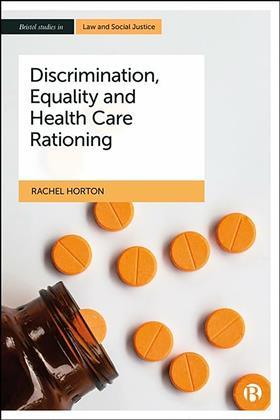Discrimination, Equality and Health Care Rationing
Rachel Horton
£80, Bristol University Press
★★★★✩
The late and eminently quotable Lord Bingham summarised the dilemma at the heart of health care provision in his judgment in R v Cambridge Health Authority, ex parte B (1995): ‘I have no doubt that in a perfect world any treatment which a patient, or a patient’s family, sought would be provided if doctors were willing to give it, no matter how much it cost, particularly when a life was potentially at stake. It would however, in my view, be shutting one’s eyes to the real world if the court were to proceed on the basis that we do live in such a world.’

COVID-19 and its aftermath have made such issues more acute. However, the approach of the courts has generally been to take a hands-off approach, acknowledging that health authorities have wide discretion as to how their resources are best employed and are best placed to make those decisions. Often such decisions have a depressingly – but understandably – utilitarian slant. New treatments, for example, are often analysed for cost-effectiveness based on quality adjusted life years (QALYS), a statistical assessment of the anticipated increased life expectancy of a patient, and their quality of life during that time.
Horton considers the impact of equality law and human rights on health care allocation decisions. Beginning with a brief analysis of the origins of health inequalities and the law on health care allocations, the work moves on to a brisk review of the relevant parts of the Equality Act 2010 – impressive given the less-than-user-friendly structure of that statute – and of Article 14 of the European Convention on Human Rights. Age, disability and sex are obviously accorded primacy, given that many health inequalities arise from one or more of those protected characteristics. Having laid out the basics, the book then focuses on two topics – infertility treatment, and the response to the pandemic.
This is an effective treatment of the law. At well under 200 pages, it is an admirably succinct but informative review of a complex area of public law and is clear enough to serve as an introduction to the field. Probably more one for researchers or academics; but both claimant and defendant practitioners may find this book useful.
James E Hurford is a solicitor at the Government Legal































No comments yet